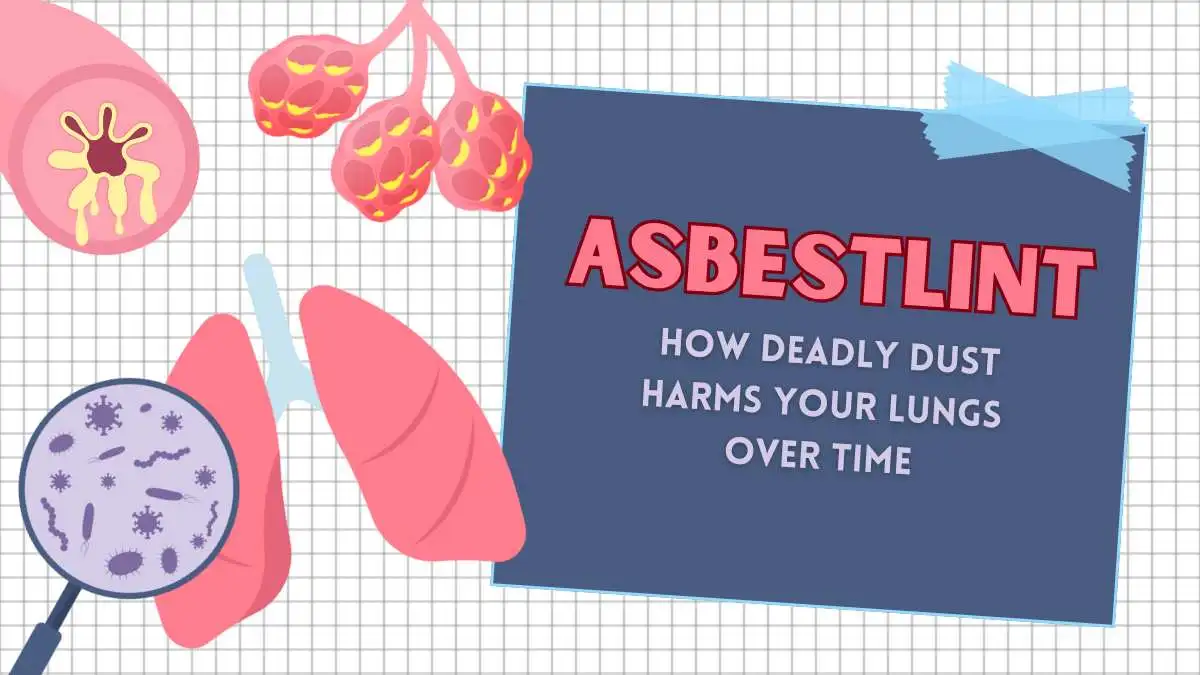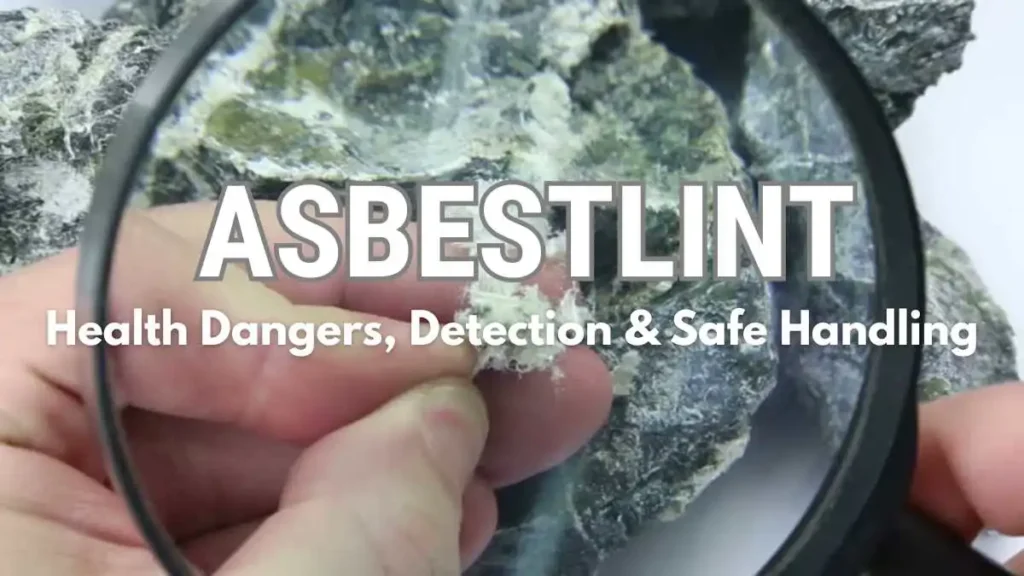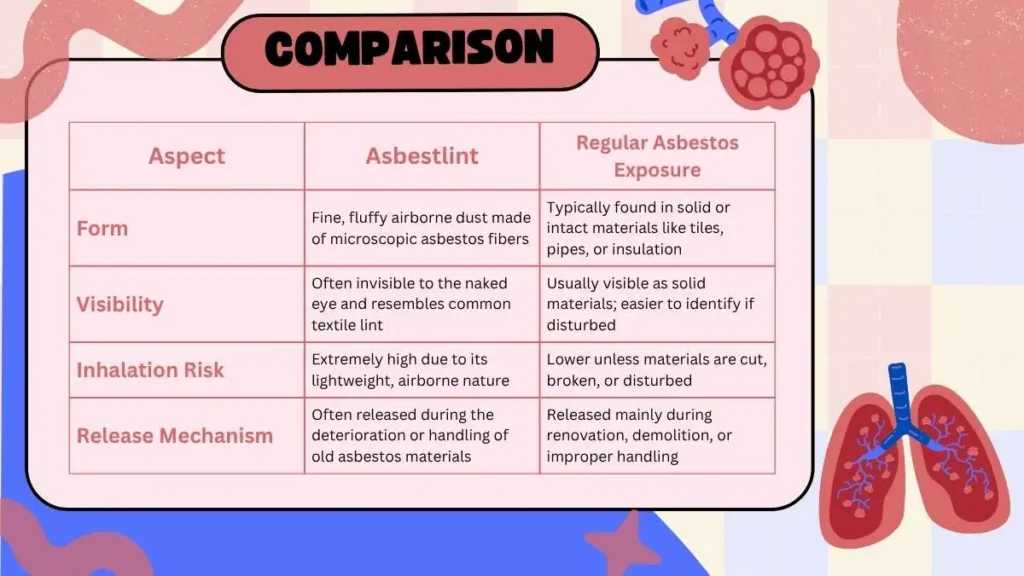HEALTH AND FITNESS
What is Asbestlint? Health Dangers, Detection & Safe Handling

In my work exploring environmental and occupational health risks, I’ve come across numerous hazards that fly under the radar despite having devastating consequences, and asbestlint is one of them. This relatively unfamiliar term blends “asbestos” and “lint” to describe a fine, fluffy dust made up of microscopic asbestos fibers. Though it might seem harmless briefly, this airborne material represents a serious health threat, especially in aging buildings, industrial facilities, and shipyards where asbestos-containing materials are still in place or breaking down.
Table of Contents
What is Asbestlint?
Asbestlint refers to the microscopic, fibrous dust released from asbestos-containing materials, particularly when those materials are handled, processed, or deteriorate over time. The particles resemble textile lint in their fluffy appearance but carry a deadly payload, sharp, needle-like asbestos fibers that, when inhaled, become embedded deep within the lungs.
Over time, exposure to asbestos lint can lead to several serious health conditions, including:
- Asbestosis: A chronic lung disease caused by scarring of lung tissue.
- Lung cancer: Especially prevalent among workers exposed to asbestos over long periods.
- Mesothelioma: A rare but aggressive cancer that affects the lining of the lungs, abdomen, or heart.
Common Environments Where Asbestlint Is Found
Asbestlint tends to accumulate in areas where asbestos insulation, ceiling tiles, roofing, or fireproofing materials have been disturbed or left to decay. Its presence is especially concerning in:
- Old construction sites: Especially those built before the 1980s, when asbestos use was widespread.
- Shipyards: Where asbestos was used extensively for fireproofing and insulation.
- Asbestos textile factories: Where raw asbestos fibers were woven into cloth for protective gear.
- Mechanical rooms and boiler rooms: Common hotspots for degrading asbestos insulation.
- Abandoned buildings: Where neglect allows the material to crumble and release fibers into the air.
Because it is nearly invisible and can remain airborne for long periods, individuals working in or visiting such sites may unknowingly inhale the fibers.

Health Risks Associated with Inhaling Asbestlint
The danger of asbestlint lies in its microscopic structure and persistence. Unlike household dust, these fibers are resistant to breakdown, and once inside the body, they remain there indefinitely. Over time, the immune system’s inability to expel these fibers leads to inflammation, tissue damage, and the formation of cancerous cells.
Key Health Risks Include:
- Latency Period: Symptoms of diseases like mesothelioma may not appear until 20-50 years after exposure.
- No Safe Level of Exposure: Even minimal inhalation of asbestos fibers can trigger serious health consequences.
- Compounded Risk for Smokers: Smoking significantly increases the risk of lung cancer when combined with asbestos exposure.
Legal and Regulatory Framework for Handling Asbestlint
Governments across the globe have recognized the grave dangers posed by asbestos and have enacted strict regulations around its handling. In the United States, the Occupational Safety and Health Administration (OSHA) and the Environmental Protection Agency (EPA) oversee asbestos-related safety standards. In the UK, the Control of Asbestos Regulations 2012 outline detailed procedures for working with asbestos materials.
Key regulatory requirements include:
- Mandatory training for workers
- Proper disposal in asbestos-specific landfills
- Notification to local environmental health authorities
- Use of personal protective equipment (PPE)
These guidelines apply equally to asbestos lint, given that its airborne nature makes it even more dangerous than many intact asbestos-containing materials.
Preventing Exposure to Asbestos Lint
The best way to protect against the harmful effects of asbestlint is to avoid exposure altogether. Here are some preventive strategies:
- Do not disturb suspected asbestos-containing materials.
- Always consult professionals before renovating older buildings.
- Ensure proper ventilation and filtration in industrial settings.
- Regularly inspect and maintain known asbestos installations.
- Educate workers and building occupants about the risks.
Employers, particularly those in the construction, demolition, and maritime sectors, must prioritize employee safety by complying with all asbestos-related occupational health standards.
Modern Alternatives to Asbestos
In recent decades, advancements in material science have introduced safer, non-toxic alternatives to asbestos. These include:
- Cellulose fibers
- Thermoset plastic flour
- Polyurethane foams
- Amorphous silica fabrics
- Glass wool and rock wool insulation
How Asbestlint Differs from Regular Asbestos Exposure

Why Public Awareness of Asbestlint Matters
Despite decades of regulatory efforts, asbestos-related illnesses continue to claim lives. One of the reasons is a lack of public awareness about the many ways asbestos can become airborne, especially in the form of asbestlint. As urban centers evolve and buildings age, the potential for exposure only grows.
Education plays a critical role in:
- Reducing DIY renovation accidents
- Encouraging prompt professional intervention
- Empowering policy change and stricter regulation enforcement
- Supporting victims and their families
FAQs
1. Can asbestlint settle on clothing and spread to other areas?
Yes, asbestlint can cling to clothing and unintentionally be carried into clean environments.
2. Is it dangerous even in small, short-term exposures?
Yes, even minimal short-term exposure to airborne asbestos fibers can pose serious health risks.
3. Can air purifiers remove asbestlint from indoor environments?
Only specialized HEPA-filter air purifiers are effective in capturing asbestos fibers, such as asbestos lint.
Final Thoughts
Asbestlint may sound like a niche technical term, but it encapsulates a very real and hazardous phenomenon. Its fluffy appearance belies the deadly health consequences that can arise from even minimal exposure. Whether you’re a homeowner renovating a historic property, a construction worker on an industrial site, or a policymaker overseeing environmental safety, understanding and respecting its dangers is essential.
With proper education, regulatory compliance, and professional intervention, we can reduce the risks and protect future generations from this silent, airborne hazard.
-

 GENERAL5 months ago
GENERAL5 months agoChristofle – For Those Who Dream of Family Heirloom Silver
-

 SPORTS7 months ago
SPORTS7 months agoDiscover the World of Football with Streameast: Watch Your Favorite Leagues and Tournaments
-

 GENERAL4 months ago
GENERAL4 months agoUncovering the World of кинокрадко: The Dark Side of Film Piracy
-

 GENERAL2 months ago
GENERAL2 months agoATFBooru: Anime, Gaming, and Subculture Imageboard























